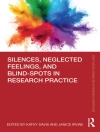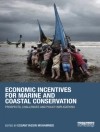Analyzing Narrative Reality offers a comprehensive framework for analyzing the construction and use of stories in society. This centers on the interplay of narrative work and narrative environments, viewed as reflexively related. Topics dealing with narrative work include activation, linkage, composition, performance, collaboration, and control. Those dealing with narrative environments include close relationships, local culture, status, jobs, organizations, and intertextuality. Both the texts and everyday contexts of the storying process are considered, with accompanying guidelines for analysis and illustrations from empirical material. Methodological procedures feature interviewing, ethnographic fieldwork, and conversational and textual analysis. The conclusion raises the issue of narrative adequacy, addressing the questions of what is a good story and who is a good storyteller.
Analyzing Narrative Reality is truly multidisciplinary and should appeal to researchers working across the social and behavioral sciences and humanities, as well as to narratively focused researchers in nursing, education, allied and public health, social work, law, counseling, and management/organization studies.
İçerik tablosu
PREFACE
INTRODUCTION
PART I. NARRATIVE REALITY
1. Stories in Society
2. Forms of Analysis
3. Into the Field
PART II. NARRATIVE WORK
4. Activation
5. Linkage
6. Composition
7. Performance
8. Collaboration
9. Control
PART III. NARRATIVE ENVIRONMENTS
10. Close Relationships
11. Local Culture
12. Status
13. Jobs
14. Organizations
15. Intertextuality
PART IV. NARRATIVE ADEQUACY
16. What Is a Good Story?
17. Who Is a Good Storyteller?
AFTERWORD
REFERENCES
Yazar hakkında
James A. Holstein is professor of sociology in the Department of Social and Cultural Sciences at Marquette University. His research and writing projects have addressed social problems, deviance and social control, mental health and illness, family, and the self, all approached from an ethnomethodologically- informed, constructionist perspective.












